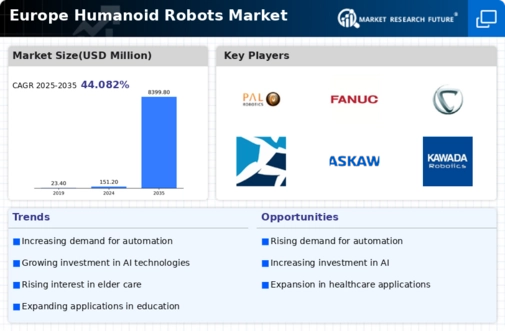The Europe Humanoid Robots Market is a rapidly evolving sector characterized by a diverse range of players competing for share in a landscape dominated by innovation and technological advancements. This market reflects a growing interest in automation and robotics, with humanoid robots being integrated into various applications, including healthcare, education, and customer service. The competitive dynamics of this market are shaped by factors such as research and development capabilities, portfolio differentiation, and strategic partnerships.
With the increasing demand for autonomous systems and a heightened focus on improving human-robot interaction, companies are constantly adapting their strategies to leverage emerging trends while addressing the unique regulatory and consumer needs specific to the European market.
Société Générale des Techniques Avancées has established a notable presence in the Europe Humanoid Robots Market through its commitment to innovation and technological enhancement. The company is recognized for its well-rounded expertise in creating humanoid robots that incorporate advanced functionalities, which resonates well with the evolving market demands. Strengths such as robust RD capabilities allow the company to stay ahead of the competition, ensuring continuous improvement and adaptation of its offerings.
Furthermore, its strategic collaborations with research institutions and universities serve to bolster its market position, facilitating the development of cutting-edge humanoid robotic solutions tailored to various industries ranging from healthcare to customer interaction.
PAL Robotics has carved an impressive niche within the Europe Humanoid Robots Market by focusing on developing humanoid solutions that seamlessly integrate into daily activities. The company boasts a diverse portfolio of key products, including versatile humanoid robots designed for assistance in healthcare settings and interactive platforms for educational purposes. PAL Robotics is noted for its strengths in creating adaptive robots that enhance operational efficiency and user engagement. The company has also engaged in various strategic mergers and acquisitions to bolster its technological capabilities and expand its market reach in Europe.
By aligning its innovations with market needs and prioritizing user experience, PAL Robotics continues to enhance its footprint in the competitive landscape of humanoid robotics across the continent.




















Leave a Comment